
Fitness Challenge to encourage students to increase fitness levels, skills challenge and heart rate check.
- Subject:
- Physical Education
- Material Type:
- Activity/Lab
- Author:
- Shawna Duda
- Date Added:
- 03/15/2021

Fitness Challenge to encourage students to increase fitness levels, skills challenge and heart rate check.
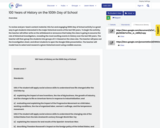
To review and pre-teach content material, this fun and engaging 100th Day of School activity is a great way to get students interested in the major historical events of the last 100 years. To begin the activity, the teacher will either write on the whiteboard or announce that today the class is going to assume the role of Historical Investigators, revealing the most exciting events in history over the last 100 years. The teacher will then group the students into groups of 2-4 based on the class size. The teacher will pass out the investigation sheet, and direct students to open the Google Slide presentation. The teacher will model how to select and research a given historical event using credible sources.
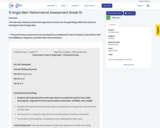
This task asks students to base their arguments on their own strong feelings within the context of having just read 12 Angry Men. ** This performance assessment was developed by a collaborative team of teachers and division staff from Middlesex, Poquoson, and West Point school divisions.
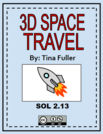
I created this board game to give my 2nd grade students review of 3D shapes. They travel through space, trying to make it back to earth. This game supports sol 2.13, identify, describe, compare, and contrast plane and solid figures (circles/spheres, squares/cubes, and rectangles/rectangular prisms. Before playing this game, my students completed activities using manipulatives to identify solid shapes, the number of vertices, edges, and faces, and traced the faces of the cube and rectangular prism in order to build understanding of the relationship between plane and solid figures. My students played this game in small groups of 3-5 students. They take turns rolling a die, jump to the number rolled, and answer the question in the box they land on. My students love to play board games! As a result, they are more attentive and motivated to learn.
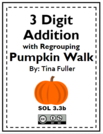
My students need lots of practice to master addition with regrouping, so I created this fun game to help them practice. This activity supports sol 3.3b, create and solve single-step and multi-step practical problems involving sums or differences of two whole numbers, each 9,999 or less. The students make a big circle around the room and play a cakewalk style game. When the teacher stops the music, they sit in front of the closest card and add the two numbers. Students use their knowledge of place value and estimation to determine if their answer is reasonable. I created this activity during the week of Halloween so the pumpkins were a big hit with my students who really enjoy movement activities.

The opening slide describes that the best deal is getting more for your money. Things on sale are not always at the best price and the amount of product matters. Students are given five slides with two or three prices. Students have to determine which is a better deal. Students may use unit rates, but students are also asked to use another way to determine which is a better deal. Students can scale up or down using ratio tables or by purchasing the same quantity of each item.

This lesson should be used as practice after students have had experience with ratio tables, graphing points, and determining proportional relationships. On slides 1-4 students are given a situation, then they complete the ratio table, graph the coordinates, and determine if the relationship is proportional. On slides 5-7 students are given graphs and asked to determine if it represents proportional relationships, and explain why. On slide 8 students are given written situations and asked to determine if they represent proportional relationships and explain their reasoning. This lesson was created with Jamboard to provide teachers and students with real time collaboration.

Directions: Solve the following inequalities. Write each with the variable on the left and then on the right. Graph it on the number line. Label 3 points on the number line. Tell 3 numbers that would be in the solution set and if the circle is open or closed.

The student will complete a task where they are given 50 feet of fencing. They have to design the largest area of garden using all of the fencing. Students must explore circles, right triangles, and rectangles. Students will be using the formulas of area and perimeter and circumference to calculate perimeter and area. This task was created with Jamboard to allow students to collaborate together in person or remotely, in real time, as well as allowing the teacher to view students' work in progress. The initial slide presents the task and provides the formulas for each shape’s area and perimeter. The subsequent slides provide workspace for students’ thinking and collaboration. The last slide is a conclusion slide. Here students tell which shape they chose, give the measurements, and justification

With this activity, students will review the components of the coordinate plane, graph coordinates, and tell coordinates. This activity was created with Jamboard to allow the teacher to view students placements of points and work in real time. The activity can be presented to the whole group with the teacher giving students assignments on each slide (by sharing editor rights) or assigned to individual students with each a copy.

This unit functions as an introduction to ELA6. Included are 7 days' worth of activities that get students engaged in the content and set the stage for yearlong processes and procedures. Activities include: a virtual Book Pass; an introduction to the process of Writing Seeds and samples for you to use; a survey that asks students to explore who they are as a reader and a writer; a Personal Reading Timeline mini-project; several options that allow students to track their IR throughout the year; and a Summative Assessment in the form of a Literacy Narrative, with mentor texts and rubric

This unit represents Unit 2 for ELA6. Included are 16 days of activities that get students engaged in the content and continue to build on year-long processes and procedures. Activities include practice with fiction signposts, subject-verb agreement, verb tense, summary strategies, narrative elements and plot diagrams, reading summative assessment, and writing formative assessment in the form of a narrative essay with mentor texts and rubric.

This unit functions as an introduction to ELA7. Included are 7 days' worth of activities that get students engaged in the content and set the stage for yearlong processes and procedures. Activities include: a virtual Book Pass; an introduction to the process of Writing Seeds and samples for you to use; a survey that asks students to explore who they are as a reader and a writer; a Personal Reading Timeline mini-project; several options that allow students to track their IR throughout the year; and a Summative Assessment in the form of a Literacy Narrative, with mentor texts and rubric

This unit represents Unit 2 for ELA7. Included are 16 days of activities that get students engaged in the content and continue to build on year-long processes and procedures. Activities include practice with fiction signposts, subject-verb agreement, verb tense, summary strategies, narrative elements and plot diagrams, reading summative assessment, and writing formative assessment in the form of a narrative essay with mentor texts and rubric.

This unit functions as an introduction to ELA8. Included are 7 days' worth of activities that get students engaged in the content and set the stage for yearlong processes and procedures. Activities include: a virtual Book Pass; an introduction to the process of Writing Seeds and samples for you to use; a survey that asks students to explore who they are as a reader and a writer; a Personal Reading Timeline mini-project; several options that allow students to track their IR throughout the year; and a Summative Assessment in the form of a Literacy Narrative, with mentor texts and rubric

This unit represents Unit 2 for ELA8. Included are 17 days of activities that get students engaged in the content and continue to build on year-long processes and procedures. Activities include practice with fiction signposts, sentence structure, dialogue and direct quotations, characterization, summary strategies, narrative elements and plot diagrams, reading summative assessment, and writing formative assessment in the form of a character analysis essay with mentor texts and rubric.
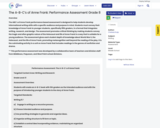
The ABC’s of Anne Frank performance based assessment is designed to help students develop informational writing skills with a specific audience and purpose in mind. Students must convey their knowledge of Anne Frank to younger students, specifically fifth graders, in a format that integrates writing, research, and design. The assessment promotes critical thinking by making students convey the tragic and often graphic nature of the Holocaust and life of Anne Frank in a way that is suitable for a young audience. The assessment gives each student depth of knowledge about World War II, the Holocaust, and the life of Anne Frank, promoting metacognition well beyond the reading of the play. It is the culminating activity in a unit on Anne Frank that includes readings in the genres of nonfiction and drama.** This performance assessment was developed by a collaborative team of teachers and division staff from Middlesex, Poquoson, and West Point school divisions.
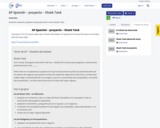
Students research, prepare and present the tv show Shark Tank.

A lesson that focuses on understand that text formats can be used to set a purpose for reading.It is a cross-curricular lesson for Elementary Librarians to support the ELA standard (3.6).Created by: Tiffany Ray Powhatan County Public School 3/2021
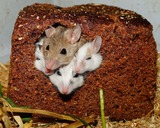
The series of lessons allows students to review the concepts of mutations, adaptations and natural selection by studying a population of pocket mice through a video clip and then applying their knowledge through a simulation game.